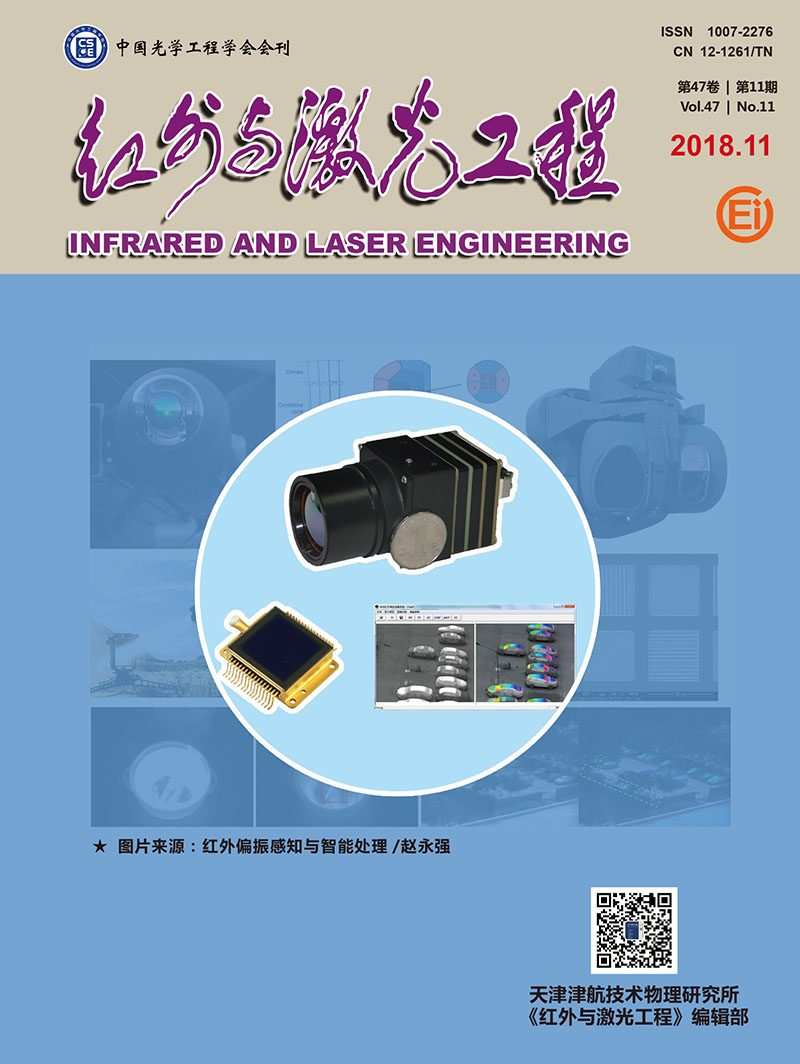|
[1]
|
Ma Y, Li X, Yu X, et al. High-repetition-rate and short-pulse width electro-optical cavity-dumped YVO4/Nd:GdVO4 laser[J]. Appl Opt, 2014, 53(14):3081-3084. |
|
[2]
|
Dong Xiaolong, Gao LanLan, Zhang Fan, et al. Simulation of actively Q-switched pulse parameters in Nd:YVO4 and Nd:YAG[J]. Infrared and Laser Engineering, 2015, 44(7):1986-1990. (in Chinese) |
|
[3]
|
Ma Yufei, Li Xudong, Yu Xin, et al. High-repetition-rate and short-pulse-width electro-optical cavity-dumped YVO4/Nd:GdVO4 laser[J]. Applied Optics, 2014, 53(14):3081-3084. (in Chinese) |
|
[4]
|
Li Lei, Wang Jianlei, Cheng Xiaojing, et al. Cryogenic Yb:YAG solid state pulsed laser amplifier[J]. Infrared and Laser Engineering, 2013, 42(5):1170-1173. (in Chinese)李磊, 王建磊, 程小劲, 等. 低温重复率Yb:YAG固体激光放大器[J]. 红外与激光工程, 2013, 42(5):1170-1173. |
|
[5]
|
Liu Xuesheng, Xia Jiaozhen, Yan Xin, et al. High peak power lamp-pumped pulsed Nd:YAG solid-state laser with one cavity[J]. Chinese Journal of Lasers, 2008, 35(9):1313-1317. (in Chinese)刘学胜, 夏姣贞, 鄢歆, 等. 单级静态高峰值功率灯抽运脉冲Nd:YAG固体激光器[J]. 中国激光, 2008, 35(9):1313-1317. |
|
[6]
|
Dong Jian, Liu Xuesheng, Si Hanying, et al. 350 mJ LD side pumped Q-switched Nd:YAG laser without water cooling[J].Chinese Journal of Lasers, 2016, 43(11):1101005. (in Chinese) |
|
[7]
|
Mao Xiaojie. New progress in high-power picosecond ultraviolet laser[J]. Chinese Optics, 2015, 8(2):182-190. (in Chinese) |
|
[8]
|
Zhao Yuan'an, Hu Guoxing, Liu Xiaofeng, et al. Laser conditioning technology and its applications[J]. Optics and Precision Engineering, 2016, 24(12):2938-2947. (in Chinese) |
|
[9]
|
David H, Sang-GIL R, Nipun M, et al. Nanoscale laser processing and diagnostics[J]. Applied Physics, 2009, 96(2):289-306. |
|
[10]
|
Chen Jia, Shao Ruoyan, Cui Xinqiang, et al. Spectra of high power pulsed xenon lamp tubes and their impact resistances[J]. Optics and Precision Engineering, 2016, 24(12):2988-2992. (in Chinese) |
|
[11]
|
Meng Peibei, Shi Wenzong, Yan Fanjiang, et al. Influence of resonator misalignment on performance of diode-pumped Nd:YAG laser[J]. Infrared and Laser Engineering, 2017, 46(6):0605001. (in Chinese) |
|
[12]
|
Pan Qikun. Progress of mid-infrared solid-state laser[J]. Chinese Optics, 2015, 8(4):557-566. (in Chinese) |
|
[13]
|
Dong J, Liu X S, Peng C, et al. High power diode-side-pumped Q-switched Nd:YAG solid-state laser with a thermoelectric[J]. Applied Sciences-Basel, 2015, 5(4):1837-1845. |
|
[14]
|
Luo X, Wang P F, Li J X, et al. Anti-detuning laser with high optical axis atability[J]. Laser Optoelectronics Progress, 2016, 56:091401. |
|
[15]
|
Koechner W. Solid State Laser Engineering[M]. Translated by Sun Wen. Beijing:Science Press, 2002. (in Chinese) |









 DownLoad:
DownLoad: